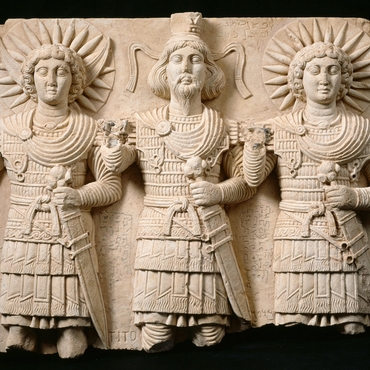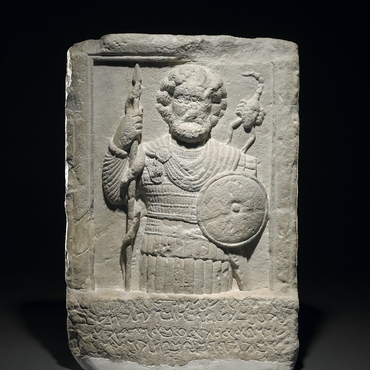
- Home
- Explore the site
- Sculpture
The most beautiful examples of Palmyrene art are sculptures, particularly relief carvings. Statuary in Palmyra was limited to honorary statues placed on the pedestals of columns lining the streets and the courtyards of sanctuaries. Reliefs, on the other hand, were used to decorate funerary monuments and temples.
Funeral portraits
The best-known reliefs are the extravagant funerary portrait busts, carved in very high relief on slabs that sealed the burial niches or loculi in tombs. The bust portrait from the waist up is alien to eastern art. Originally inspired by the sculpture of Zeugma and by Roman art, these busts were better suited to the short, broad rectangle or trapeze of the loculi slabs than standing figures. They were mass-produced and hardly changed for two centuries. Depicted with the strict frontality typical of Palmyrene art, the distant ancestor of iconic art, these idealised portraits became increasing realistic from the 2nd century onwards.
Religious reliefs
In the temples, religious relief carvings replaced the divine statues found everywhere else at this time. Indirect evidence suggests large images in relief were used for worship in the temples of Bel and Baalshamin. The reliefs of Shadrafa and Baalshamin, conserved respectively in the British Museum and the Louvre Museum, give a fairly good idea of what these religious reliefs may have looked like.
Associated media
Open Media Library

Triad of Baalshamin

Bust of Yarhai

Relief of Maliku

